Abstract 6/2015
Table of content15
Wojciech Bąkowski – Methodology of determination of public transport services supply in the city
Leszek Kornalewski, Jacek Malasek – Efficiency analyse for urban travel behaviours improvement methods
Maciej Michnej, Tomasz Zwoliński – Institutional cooperation and citizen’s involvement as an element of sustainable urban mobility planning
Kędzior Rafał, Bryniarska Zofia – Passenger information in urban public transport
Abstracts
Wojciech Bąkowski
Methodology of determination of public transport services supply in the city
Abstract: The aim of this article is to present solutions for two major problems: how to increase revenue in order to reduce the amount of subsidies from the budget to public transport and how to increase supply to maintain a relative balance with demand? To answer above questions, the methodology for determining the supply of public transport services has been presented based on the basic economic terms and guidelines of economic theory. The influence of the price elasticity of demand on revenue from ticket sales was presented. The advantages of greater value of own car mobility, have been described in the context of public services carried out by public transport. People – prosumers recognize that their way of self-gratification to move around the city has more value to them than lower priced public transport service. Low price tariff of substitution service is not an encouraging parameter for people to reduce car travel in the city area. There is a need to reduce the value of self-gratification to move around the city by car. Next to enhance the value of public transport services is a way of increasing demand.
Keywords: passenger transport, public transport, supply, transport service
Leszek Kornalewski, Jacek Malasek
Efficiency analyse for urban travel behaviours improvement methods
Abstract: The share of transport in climate emissions is still rising; to meet EU environment policy targets a reduction of at least 80% in 2050 compared to 1990 is needed. The transport sector accounts for 23% of energy related CO2 emissions globally. For decades governments have tried to influence citizens travel behaviour and encourage them to opt for sustainable alternatives to the car use. There is a need for more knowledge on effectiveness of policy measures and successful implementation as well as on specific circumstances at the local/regional level methods. The research objective of the Step-by-Step project was to identify potential successful policy measures for changing the transport behaviour of people based on structural differences between cities and cultures. In the framework of the Step-by-Step project 31 cases were divided into four categories according to the type of applied influence measures: related to: the public transport promotion, car drop, eco-friendly travel modes promotion and connected with sustainable urban transport policy. In this article nine cases, apparently the most successful and applied measures (considered as innovative and/or well done) which could be announced best practices for wide dissemination, are analyzed.
Keywords: urban transport policy, travel behaviors, sustainable development
Maciej Michnej, Tomasz Zwoliński
Institutional cooperation and citizen’s involvement as an element of sustainable urban mobility planning
Abstract: It is estimated that by 2050, the urban population will increase to approx. 6 billion people, while nowadays about 80% of Europeans live in the urban areas. Slogan “city for people”, popular among architects, begins to have a broader meaning in the context of the continuous growth of the urban population. Therefore, it is necessary to look more closely at the relationship between planning of sustainable mobility and quality of life among residents, determined by the freedom of movement when, where and how they want – regardless of age, income or health status. This article presents a new concept of methodological principles of sustainable urban mobility planning, which in contrast to the traditional approach, relies heavily on the involvement of citizens and stakeholders and institutional cooperation between the different levels of government and management as well with neighboring municipalities. On the basis of the activities of the Municipality of Cracow the authors present examples associated with increased public participation in urban transport planning and examples of institutional cooperation, which is carried out, among others, by task forces appointed in the City of Cracow on the basis of the conclusions resulting from the substantive and legitimate needs.
Keywords: transport systems, sustainable transport, citizen’s involvement, institutional cooperation, SUMP
Kędzior Rafał, Bryniarska Zofia
Passenger information in urban public transport
Abstract: Nowadays, passenger information system in urban public transport seems to consist not only of traditional timetable that provide passengers with information about departures’ times of buses and trams from tram/bus stops. The permanent development of new technologies causes that passenger information becomes a kind of navigator assisting passenger alongside his travel route and provides him necessary information or hints to help him reach goal of his travel. Taking into account that the share of private cars dominates over any other mode of urban transport it is especially essential to provide proper attention to the measure and to the form of passenger information system that should assure safe journey and reaching his goal. At the same time passenger information system need to encourage passengers to use public transport.
Characteristics of passenger information as well as various methods and forms of transferring information at particular stages of travel such as: planning, progress and after its completion have been presented in the article. The finding of marketing survey carried out at bus/tram stops among passengers of public transport in Cracow have also been described. The survey has been aimed to assess the level of passenger information in Cracow based on the feedback of public transport users. The assessment of the quality of information available at the stage of travel planning and when passenger approaches the bus/tram stop or gets in the bus of tram have been evaluated. Moreover, sources and types of information which is the most frequently used and the most important for passengers as well as proposals of improvement of its transmission and expanding the range of information have been formulated.
Keywords: urban public transport, passenger information system, dynamic passenger information

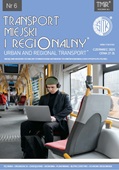 SITK
SITK 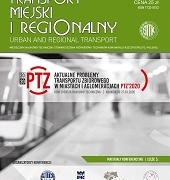
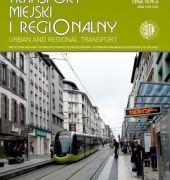 SITK RP
SITK RP 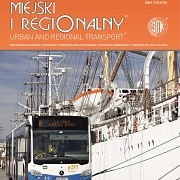 SITK RP
SITK RP 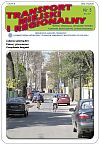 SITK RP
SITK RP 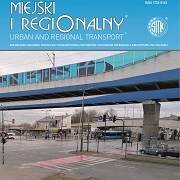 SITK
SITK 
 SITK RP
SITK RP SITK RP
SITK RP